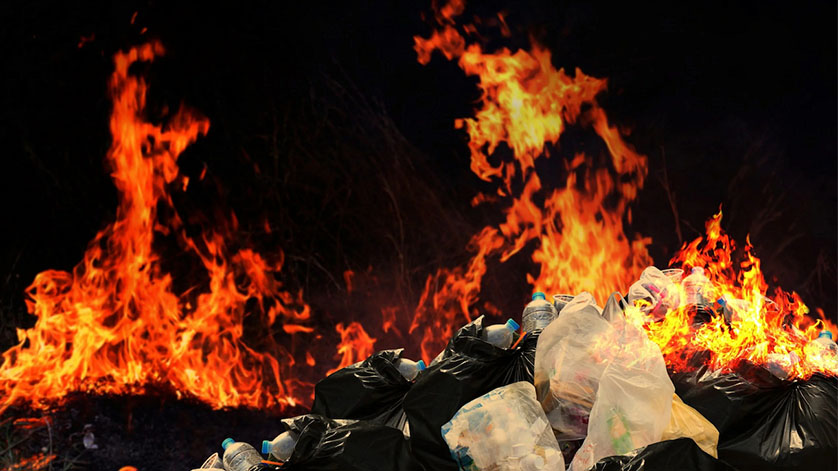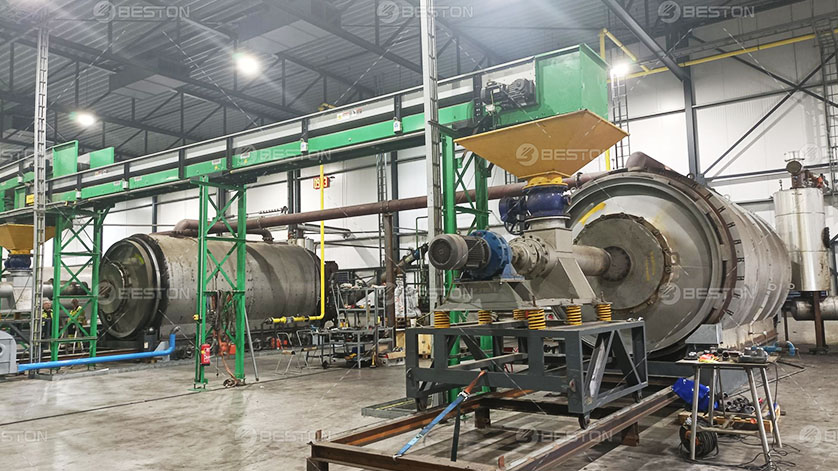Waste plastic disposal has become a pressing issue in the modern world, prompting the exploration of various methods for effective management. Among the alternatives, incineration and pyrolysis stand out as prominent contenders, each offering unique approaches and outcomes. In this article, we delve into a comparative analysis of these two methodologies to elucidate their advantages, disadvantages, and environmental implications.

Incineration: The Traditional Approach
Incineration, a widely adopted method for waste disposal, involves the combustion of waste materials at high temperatures. In the case of plastic, this process aims to reduce the volume of waste while harnessing the energy released during combustion. However, incineration is not without its drawbacks.
Environmental Concerns
One of the primary criticisms of incineration is its environmental impact. The combustion of plastics releases harmful pollutants into the atmosphere, including carbon dioxide, sulfur dioxide, and nitrogen oxides. These emissions contribute to air pollution and may exacerbate climate change.
Residue Management
Additionally, incineration generates ash and other residues that require proper disposal. Depending on the composition of the waste and the efficiency of the incineration process, these residues may contain hazardous materials, further complicating waste management efforts. In response to these limitations, Beston Group offers a sustainable plastic recycling solution, pyrolysis.

Pyrolysis: A Sustainable Alternative
In contrast to incineration, pyrolysis plant offers a more sustainable approach to waste plastic disposal. This process involves the thermal decomposition of organic materials in the absence of oxygen, resulting in the production of valuable byproducts such as plastic to fuel.
The Role of Pyrolysis Plants
Pyrolysis plants play a pivotal role in facilitating the plastic to fuel conversion process. These facilities are equipped with advanced technologies that enable the continuous processing of waste plastics, ensuring efficient and cost-effective operation.
Environmental Benefits
One of the key advantages of pyrolysis is its minimal environmental impact. Unlike incineration, which releases pollutants into the atmosphere, waste plastic pyrolysis plant produces fewer emissions and can be configured to capture and utilize byproducts such as syngas for energy generation.
Resource Recovery
Moreover, pyrolysis enables the recovery of valuable resources from waste plastics. Through the conversion of plastics into fuels such as pyrolysis oil, these processes contribute to the circular economy by reducing the reliance on finite fossil fuels and mitigating the accumulation of plastic waste in landfills.
Continuous Pyrolysis Plants: Enhancing Efficiency
The advent of continuous pyrolysis plants represents a significant advancement in waste plastic disposal technology. Unlike traditional batch pyrolysis systems, which require frequent downtime for loading and unloading, continuous plants operate continuously, maximizing efficiency and throughput.
Operational Efficiency
Continuous pyrolysis plants are designed to streamline the plastic to fuel conversion process, minimizing downtime and maximizing productivity. By automating key stages of the pyrolysis process, these facilities can achieve higher yields and lower operating costs compared to batch systems.
Scalability and Flexibility
Furthermore, continuous pyrolysis plant offers scalability and flexibility, allowing operators to adjust production levels according to demand. Whether processing small volumes of waste plastics or large-scale industrial operations, these plants can adapt to various feedstocks and processing requirements.
Conclusion: Embracing Sustainable Solutions
In conclusion, the comparison between incineration and pyrolysis highlights the importance of adopting sustainable solutions for waste plastic disposal. While incineration remains a prevalent method in many regions, its environmental drawbacks underscore the need for alternative approaches such as pyrolysis.
With its minimal environmental impact, resource recovery capabilities, and technological advancements such as continuous pyrolysis plants, pyrolysis offers a promising pathway towards a more sustainable future. By investing in innovative waste management technologies and practices, we can mitigate the environmental consequences of plastic waste while harnessing its potential as a valuable resource.